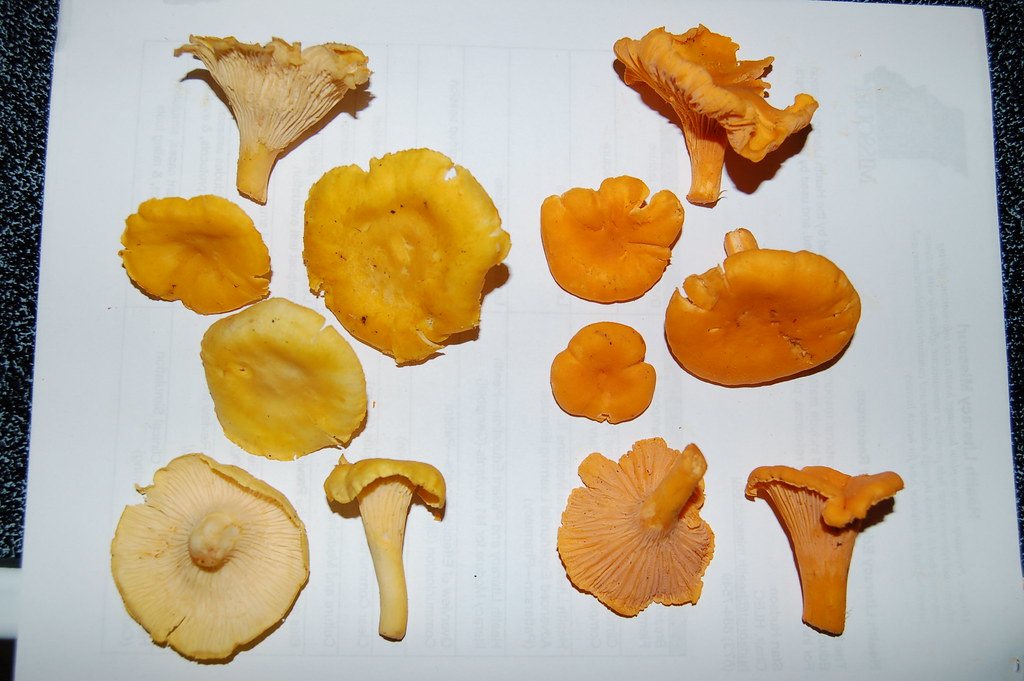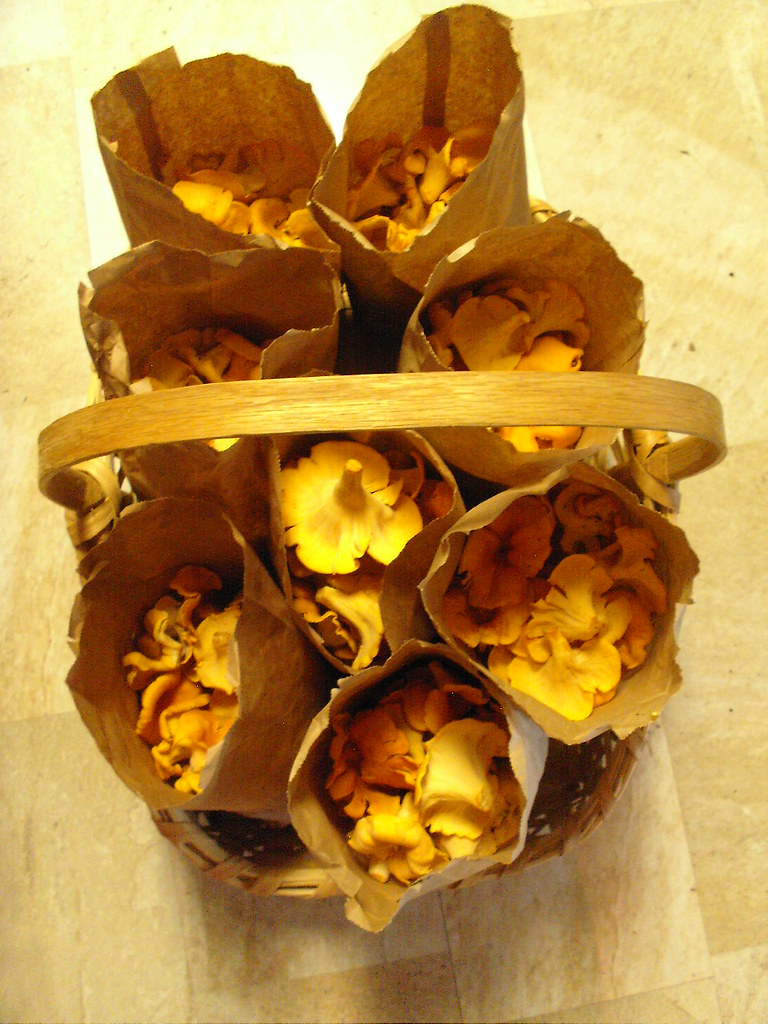 Internet issues and work have kept me from posting before now, but I thought I would share a few photos from the mushrooms class. Here is Jon, coffee in hand, going through some slides explaining the different families of mushrooms. As you can see he had packed the presentation with many of his photos so those who attended got some good ideas of what to look for when trying to make an accuarte identification.
Internet issues and work have kept me from posting before now, but I thought I would share a few photos from the mushrooms class. Here is Jon, coffee in hand, going through some slides explaining the different families of mushrooms. As you can see he had packed the presentation with many of his photos so those who attended got some good ideas of what to look for when trying to make an accuarte identification. There were also plenty of mushroom identification books available to peruse. So folks could see which books they might like to go out and get for their own collections. Jon even had a few I hadn't got to see before, like this Boletes of North America, which I think will be on my Christmas list next year.
There were also plenty of mushroom identification books available to peruse. So folks could see which books they might like to go out and get for their own collections. Jon even had a few I hadn't got to see before, like this Boletes of North America, which I think will be on my Christmas list next year. We spent the morning with a brief presentation, though once you get Jon talking, nothing is too brief. Then after a quick lunch break, we hit the woods to see what we could turn up. Besides giving info on mushrooms, Jon was also glad to impart some knowledge about mushroom photography as well.
We spent the morning with a brief presentation, though once you get Jon talking, nothing is too brief. Then after a quick lunch break, we hit the woods to see what we could turn up. Besides giving info on mushrooms, Jon was also glad to impart some knowledge about mushroom photography as well. Despite the lack of rain until just a few days before, we did manage to turn up quite a few specimens. Even managed to find on big old hen, and I stress the old part. Unfortunately this one was already turning yellow in the pores and one smell would tell you that it was way past its prime and could not be sampled. Too bad because it was large enough everyone could have gotten a good taste. I am holding only about 1/5 of the original.
Despite the lack of rain until just a few days before, we did manage to turn up quite a few specimens. Even managed to find on big old hen, and I stress the old part. Unfortunately this one was already turning yellow in the pores and one smell would tell you that it was way past its prime and could not be sampled. Too bad because it was large enough everyone could have gotten a good taste. I am holding only about 1/5 of the original. Most mushrooms that we found that were fresh were small or growing on wood. Will is looking at one such specimen here.
Most mushrooms that we found that were fresh were small or growing on wood. Will is looking at one such specimen here. However, there were still a few monsters lurking about. This unidentified Tricholoma was the largest that was found. It was on the old side and showed many signs of age, but was still neat to look at. You don't see too many large Trichs in this area compared to say out in the Pacific Northwest or other regions of the country.
However, there were still a few monsters lurking about. This unidentified Tricholoma was the largest that was found. It was on the old side and showed many signs of age, but was still neat to look at. You don't see too many large Trichs in this area compared to say out in the Pacific Northwest or other regions of the country. After the hunt we brought most of our finds back to the classroom and Jon set out to identifying what he could. For edibles, in addition to the inedible hen, we had examples of chicken of the woods (yellow-pored), a smooth chanterelle, some nice and fresh hericiums, a really old man of the woods, and some even older disfigured purple gilled lacarria.
After the hunt we brought most of our finds back to the classroom and Jon set out to identifying what he could. For edibles, in addition to the inedible hen, we had examples of chicken of the woods (yellow-pored), a smooth chanterelle, some nice and fresh hericiums, a really old man of the woods, and some even older disfigured purple gilled lacarria. Jon and I, though mainly Jon since he knows the non-edibles much more than I, did our best to ID everything that was brought in. Becasue many were small, including several LBMs (little brown mushrooms) there were several that we didn't get an exact ID on, but we could at least suggest what family they were in and even narrow them down to two or three potential suspects.
Jon and I, though mainly Jon since he knows the non-edibles much more than I, did our best to ID everything that was brought in. Becasue many were small, including several LBMs (little brown mushrooms) there were several that we didn't get an exact ID on, but we could at least suggest what family they were in and even narrow them down to two or three potential suspects. All in all, in only about an hour looking along about a half mile of trail, the group managed to turn up over 60 different species which wasn't too bad considering how things had slowed down in the woods in the preceeding weeks.
All in all, in only about an hour looking along about a half mile of trail, the group managed to turn up over 60 different species which wasn't too bad considering how things had slowed down in the woods in the preceeding weeks. All in all I think everyone had a good time and hopefully learned a thing or two about mushrooms, their characteristics, and what to look for when trying to identify them.
All in all I think everyone had a good time and hopefully learned a thing or two about mushrooms, their characteristics, and what to look for when trying to identify them.There have already been requests for more mushroom programs, so Jon and I are exploring setting up some more forays in the future, including a few official ones with folks from nearby mycological club like the Missouri Mycological Society and the Kaw Valley Mycological Society. Jon has started a email distribution list so we can let those who attended know about these future events. If you were not able to attend the class but would be interested in knowing about these, just drop me a line and I'll make sure you are added to the list.









































